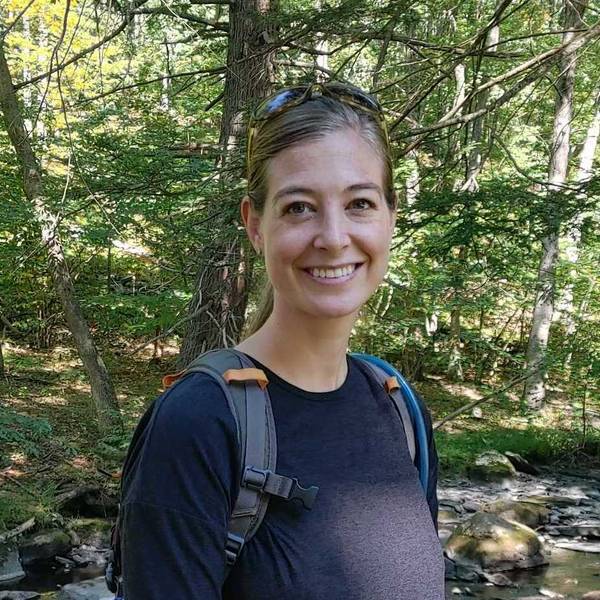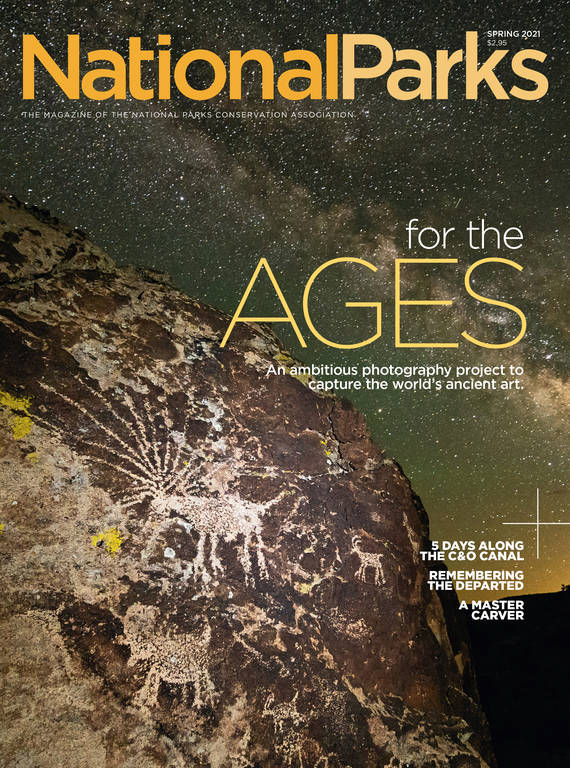Spring 2021
Fossil Tales
At White Sands National Park, history unfolds one 10,000-year-old footprint at a time.
Two sets of footprints chart a fragile path across the bleached playa of White Sands National Park and into nearby White Sands Missile Range. Only appearing when conditions are just right, these “ghost tracks” might be visible one day and invisible the next, their faint impressions all that remains of a small woman, or adolescent, who made a roundtrip journey in the distant past. At that time, grasses covered this area of New Mexico, and large mammals, such as Columbian mammoths and dire wolves, roamed.
In a study published last fall, researchers identified 427 prints extending for nearly 1 mile, making this the longest fossilized path of its kind documented to date. After painstakingly excavating 140 of them and analyzing 90 with the aid of 3-D imaging, the team, including White Sands Resource Program Manager David Bustos, pieced together the story of someone on a mission. The pace was brisk, the terrain slippery, the destination — as evidenced by the unerringly direct path — probably familiar to the walker. This trailblazer carried a toddler on at least the outbound journey, shifting the weight from hip to hip and occasionally setting the child down.
These are not the only tracks that lie just beneath the gypsum surface at White Sands, which is home to the largest collection of Ice Age megafauna tracks in the world. Kelly Carroll, the park’s chief of interpretation, estimates there to be tens of thousands — if not hundreds of thousands — scattered across roughly 80,000 acres.

National Parks
You can read this and other stories about history, nature, culture, art, conservation, travel, science and more in National Parks magazine. Your tax-deductible membership donation of $25 or more entitles…
See more ›“The stories the tracks tell are just so incredible,” said Bustos, who has spent the last 15 years coordinating with researchers from around the world to document and study the fossils. In one spot, they found evidence of a baby mammoth walking alongside its mother. It ambled off, returned to her side (perhaps to nurse) and then struck out again. Elsewhere, a human and a giant ground sloth slipped in the same mud puddle. Researchers even uncovered a mammoth track crisscrossed by the prints of children. “The kids were jumping in the mud,” Carroll said. “Just like kids do these days.”
Unfortunately, once exposed to the elements, the tracks — and the tales they tell of life more than 10,000 years ago — begin to erode. Most are gone within two to three years; some disappear even faster. Lacking a way to preserve the prints, researchers are left with the overwhelming task of trying to document them before they’re gone.
“In my mind, it’s like it’s on fire or a tornado is coming,” Bustos said. “We’re racing to try to record these things as quickly as we can.”
About the author
-
 Katherine DeGroff Associate and Online Editor
Katherine DeGroff Associate and Online EditorKatherine is the associate editor of National Parks magazine. Before joining NPCA, Katherine monitored easements at land trusts in Virginia and New Mexico, encouraged bear-aware behavior at Grand Teton National Park, and served as a naturalist for a small environmental education organization in the heart of the Colorado Rockies.



